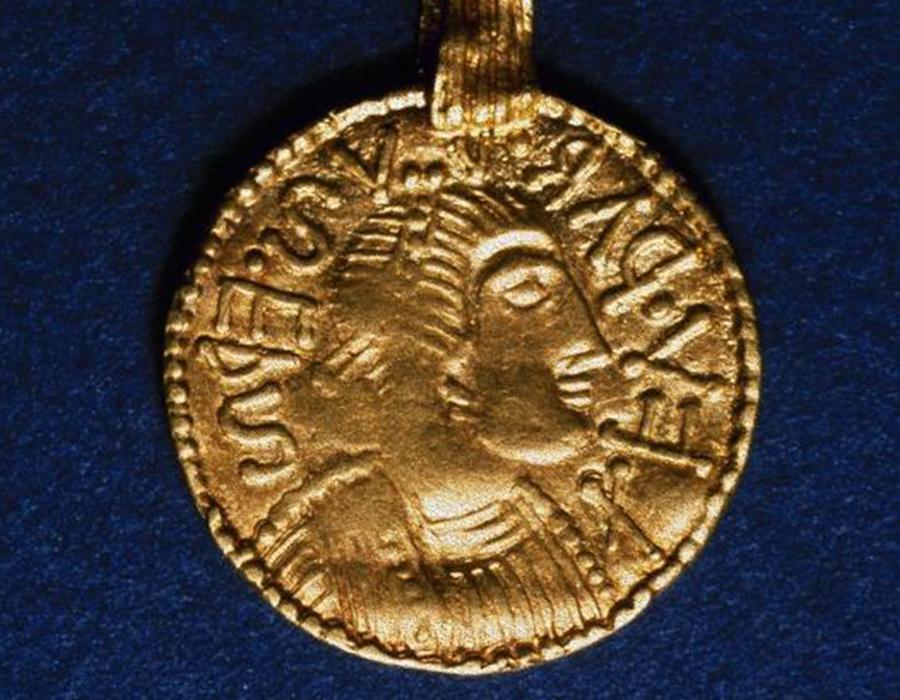Liudhard Medalet
This small medal may be one of the lesser-known survivals from Anglo-Saxon England but it represents a significant turning point in English history.

No less an event than the Anglo-Saxons’ conversion to Christianity is commemorated in the Liudhard Medalet, a coin set in a decorative mount probably intended for wearing as a medallion. Yet this beautiful gold artefact, dating from the turn of the seventh century and depicting, on the obverse, a bust of Bishop Liudhard, and on the reverse an ornamental cross, is among lesser-known survivals from Anglo-Saxon England.
The medalet, or ‘small medal’, was discovered in 1844 at St Martin’s Church in Canterbury, the oldest church in England still in use, founded by the Frankish clergyman, Liudhard, who accompanied to England the Merovingian princess Bertha on her marriage to Æthelbert of Kent, around 580AD. The medalet probably postdates Liudhard’s death in the late 590s and was minted shortly before Bertha’s death in 601.
That the coin was adapted for wearing as a medallion may suggest it was intended to proclaim the wearer’s conversion to Christianity. Such openness about the wearer’s religion, in the formerly pagan kingdom, indicates the success of this first mission to Kent, which included Pope Gregory’s mission of 596 led by Augustine of Canterbury - other early churches were destroyed in Viking raids or simply abandoned. Perhaps the medalet served another purpose: to hold the wearer to their conversion, discouraging them from reverting to paganism. An image of Liudhard, rather than Æthelbert or Bertha, suggests the Bishop’s popularity and renown, and is also evidence of the powerful backing Liudhard received as Bertha’s chaplain from Bertha and her husband. In turn, it promotes his mission’s goal: coins’ ubiquity offers daily evidence of the spread of Christianity. The medalet represents the embedding of Christianity in English culture and Anglo-Saxon life.
Events in Kent are not necessarily typical, which increases the medalet’s interest. Anglo-Saxon history offers evidence of occasions on which converting a king did not inevitably lead to the conversion of a people. Leaders converted their people to Christianity, only for many of the population to revert back to paganism with the advent of the leader’s successor. The survival of St Martin’s church in continuous use is proof of the success of Liudhard’s efforts in this particular area of Kent. Whether or not Liudhard was personally known to Kentish worshippers is not clear: his appearance on coinage would have made both him and his Christianising role familiar to many. Coinage played a part in the lives of people at all levels of society. The use of coinage to celebrate Liudhard’s mission suggests his was a total conversion throughout Æthelbert’s kingdom, rather than simply a conversion of the King and his closest associates. In this way, late-sixth-century Kent differs from other Anglo-Saxon kingdoms like Northumbria, where conversion efforts took longer to come to fruition.
The Liudhard Medalet represents a significant turning point in English history. It is also a wonderfully beautiful luxury object, and proof of considerable skill on the part of its maker.
